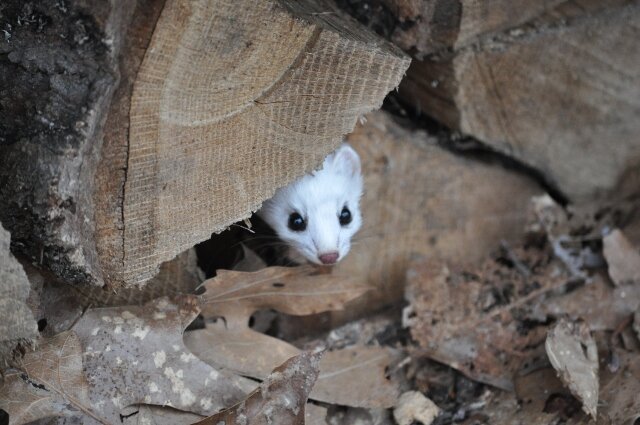Two mammals in New Hampshire don a beautiful coat of white for the winter. Who are they?
A weasel wearing winter white peeps out from a woodpile. Photo: Greg Shute
The changing day length, with a fine tuning of dropping temperatures, triggers the growth of their new coats in the fall. It's not that the hairs themselves turn white, just that new growth is white as their winter coats grow in. Starting low on the belly, new white hairs come in from bottom to top—in patches, of course, not in a nice clean line. It doesn't matter whether we get snow or not, their coats still turn white in northern ranges. Hopefully by the time the coat has grown in, there is plenty of snow for camouflage, but if not, you may be lucky enough to see a white flash over the brown bare ground.
In the spring, the old winter coat is dropped as a new brown coat replaces it, this time progressing from the back toward the belly. With the patchiness of spring snowmelt, this pattern hopefully serves them well until their molt is complete.
Look for WEASELS around your woodpile, stone walls, and field edges, where they search for mice and voles and other critters to eat. While their coat is white, they retain a black tip at the end of their tail.
You might find the tracks of SNOWSHOE HARES, also white for the winter, or flush them from places where low dense cover provides safe feeding and hiding places.
Or maybe you won't see them at all, in their white against white to protect them from predators through our long historically-snowy winters.
Banner and above: A snowshoe hare camouflaged by white fur and shadows. Photo: Thomas Lipke on Unsplash



